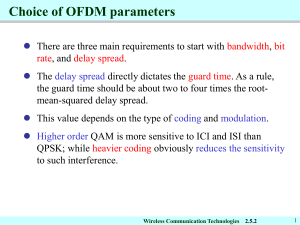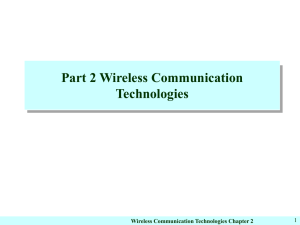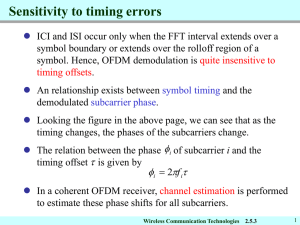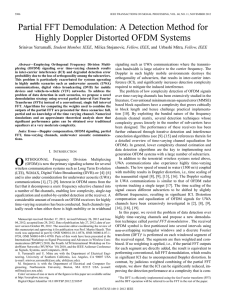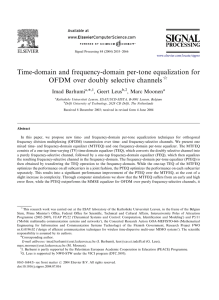Guard Time & Cyclic Extension in OFDM: Presentation
advertisement
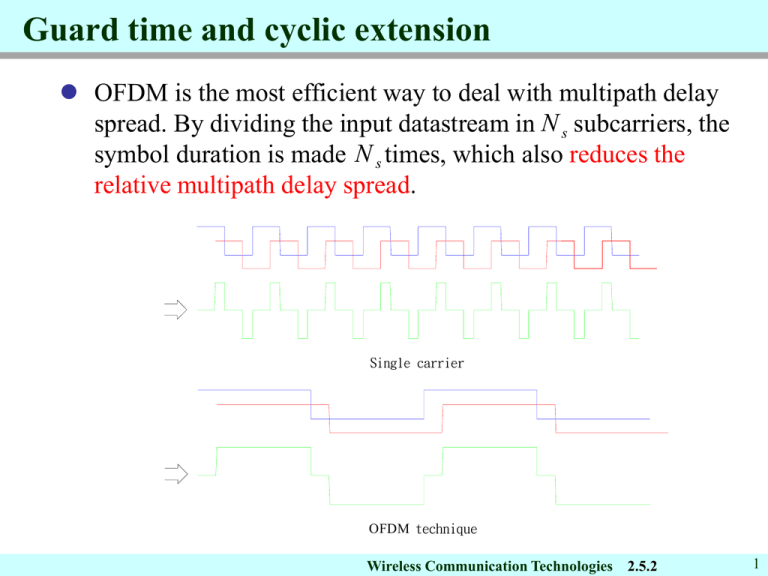
Guard time and cyclic extension OFDM is the most efficient way to deal with multipath delay 8 spread. By dividing the input datastream in N s subcarriers, the symbol duration is made N s times, which also reduces the 6 8 relative multipath delay spread. 4 6 2 4 Single carrier 0 2 Single carrier -2 0 -4 -2 -6 -4 OFDM technique -6 -8 Wireless Communication Technologies 2.5.2 1 Guard time and cyclic extension To eliminate inter-symbol interference (ISI) almost completely, a guard time is introduced for each OFDM symbol. The guard time is chosen larger than the expected delay spread , such that multipath components from one symbol cannon interfere with the next symbol. The guard time could consist of no signal at all. In that case, however, the problem of intercarrier interference (ICI) would arise. ICI is crosstalk between different subcarriers, which means they are no longer orthogonal. Wireless Communication Technologies 2.5.2 2 Guard time and cyclic extension The ICI effect is illustrated in the following figure. Note that when the receiver tries to demodulate the first subcarrier, it will encounter some interference from the second subcarrier, because within the FFT interval, there is no integer number of cycles difference between subcarrier 1 and 2. 3 Guard time FFT integration time = 1/Carrier spacing Subcarrier #1 2 1 0 ICI Delay Subcarrier #2 -1 -2 -3 OFDM symbol time 0 0.2 0.4 0.6 0.8 1 1.2 1.4 1.6 1.8 Wireless Communication Technologies 2.5.2 2 3 Guard time and cyclic extension To eliminate ICI, the OFDM symbol is cyclically extended in the guard time, as shown in figure. This ensures that delayed replicas of the OFDM symbol always have an integer number of cycles within the FET interval. 1 Cyclic Prefix 0 300 -1 200 100 -2 0 -3 -100 -4 -200 -5 -300 0 0.05 Guard Time 0.1 0.15 0.2 OFDM symbol time 0.25 Guard time / cyclic prefix 0.3 FFT integration time = 1/carrier spacing OFDM symbol time -6 ZPS -0.5 0 0.5 Wireless Communication Technologies 2.5.2 1 4

